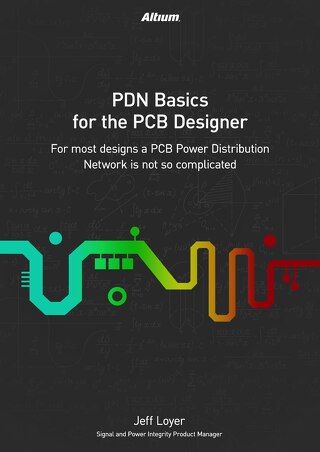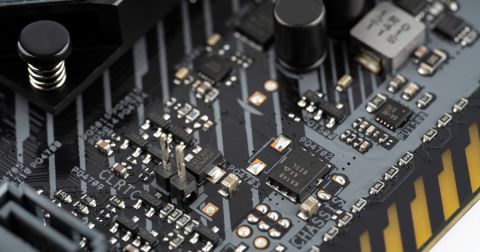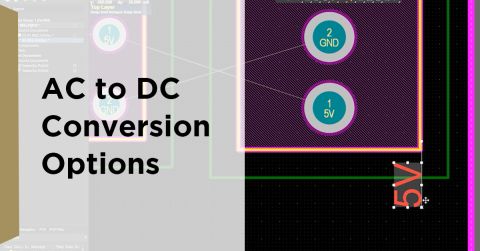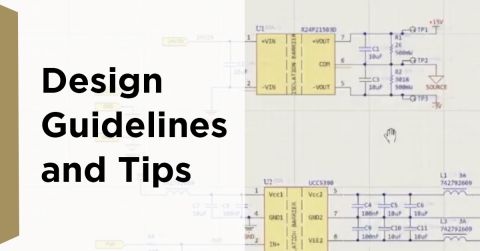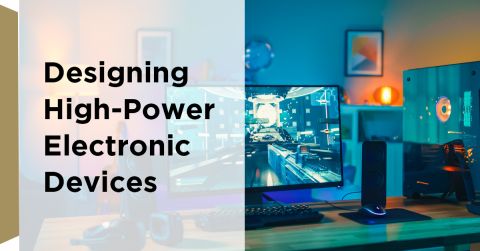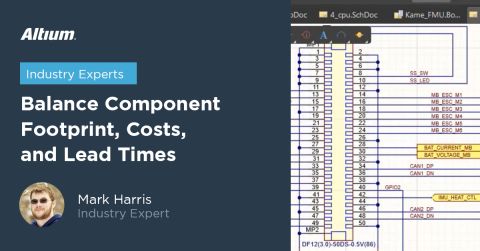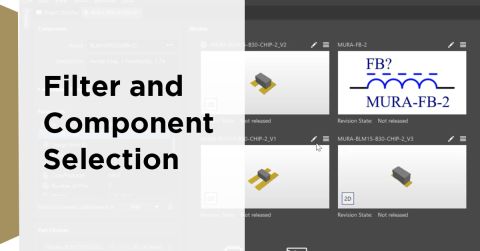Choosing a Converter or Regulator For Your Power Supply Design

When designing the power supply for your device, there are lots of different options. The biggest hurdle can sometimes be understanding the difference between the options, some suppliers using various terms for the same thing. So here we will go on a brief tour of the main choices in DC power supply design.
DC-DC Converter vs Regulator
A DC-DC converter takes an input DC voltage and generates a different output DC voltage. The main aim of a DC-DC converter is to produce the required output voltages needed by the load that is being driven. Applications may include low voltage electronic components driven by a higher voltage supply, such as in an automotive application. On the other hand, it may be a low voltage battery supply driving components with higher voltage power requirements.
A voltage regulator stabilizes the output voltage by using a control element with feedback from the output load to maintain the required voltage level. The output voltage of an unregulated DC-DC converter will reduce as load current increases. Stabilizing an unregulated converter will require the addition of a separate regulator circuit. Often the term converter is used for a circuit that generates a regulated output voltage, meaning that an independent regulator is not necessary.
There are two main types of DC-DC converters/regulators available, linear and switch mode.
Linear Regulators
Linear regulators use a resistive element to create a voltage drop to reduce the input DC voltage down to the required level. While simple in design and low in cost, this type of converter's efficiency depends on the magnitude of the required voltage drop.
Switch-mode Regulators
Switch-mode regulators operate by using the input voltage to fill and energy store and then generate the output voltage from this store. The store is a capacitive or inductive component or a combination of the two. The main difference from linear converters is that the output voltage can be higher or lower than the input voltage. Component losses determine the efficiency of the circuit. This efficiency is independent of the magnitude of the difference between the input and output voltages.
Linear converters have one main performance advantage over switch-mode converters. They generate very little electrical noise, the quality of the output voltage being dependant on the noise levels of the input voltage source. By contrast, switched converters create significant levels of electrical noise around the switching frequency of the circuit. Therefore, filtering is required to be applied to the converter's output where noise-sensitive loads are being driven. It can also require input filtering if noise coupling back to the input voltage source could create interference or affect device compliance.
Step-down/Buck Regulators
A step-down or buck regulator will efficiently lower the input voltage to generate a stable output voltage by switching the input current through an L-C flywheel circuit to drive the load from the stored energy. The output voltage will be determined by the amount of energy stored when the input voltage is switched on. This circuit can also be referred to as a chopper converter.
For more details, refer to my article on how to build a DC-DC buck regulator.
Step-up/Boost Regulators
A step-up or boost regulator will generate a stable output voltage higher than the input voltage by using the input voltage to store energy in an inductor, released when this store is switched on. The voltage generated by the inductor adds to the energy already stored in a capacitor driven by the input voltage. As a result, the capacitor and inductor combine to produce a greater voltage than the input voltage. The output voltage is determined by the mark-space ratio of the pulse width moduled signal used to drive the switch.
For more details, refer to my article on how to design a boost voltage regulator.
Buck-Boost Regulators
A buck-boost converter combines elements of a buck converter and a boost converter to produce a stable output voltage for a wide range of input voltages. While less efficient than a buck or boost circuit, it offers flexibility in coping with a fluctuating input power source.
For more details, refer to my article on how to create a buck-boost power supply.
Isolation Consideration
Switching converters that use transformers provide isolation between the input and output voltage lines for applications with safety requirements, such as in medical devices. Switching converters with non-isolated outputs tend to be physically smaller and more efficient. By definition, DC-DC linear converters will be non-isolating.
Flyback converters
A flyback converter is an isolated version of a buck-boost converter but using the primary windings of a transformer in place of the inductor in the boost converter and driving the output using the secondary winding. This circuit design offers equivalent performance with a slightly lower efficiency due to the additional transformer losses. However, the turns ratio of the transformer can be tuned to manage the switching duty cycle and current flow in the windings to optimize performance if necessary, offering the designer more trade-off opportunities in component calculations.
Forward converters
A forward converter is similar to a flyback converter but provides a much faster response time and is better suited for delivering higher currents, but is not suitable for high output voltages, has higher costs, and requires a more significant board space-a result of a higher component count.
In Summary
There are plenty of options to choose from when it comes to power supply design: converters and regulators, linear and switch mode, isolated and isolated. The marketplace is also full of off-the-shelf components for implementing each option, allowing the designer to select the best choice and optimize it for their application.
Have more questions? Call an expert at Altium and discover how we can help you with your next PCB design. You can download a free trial of Altium Designer here.
